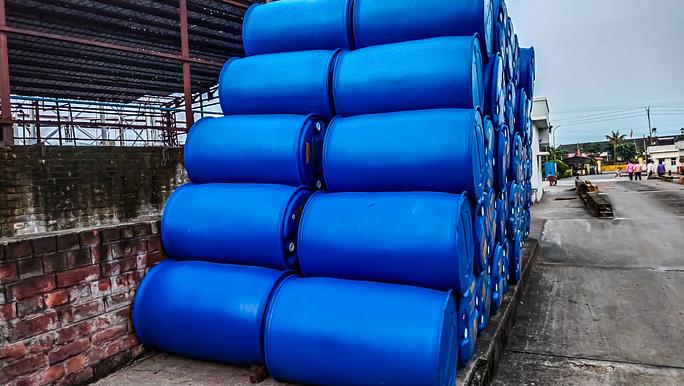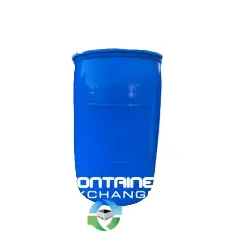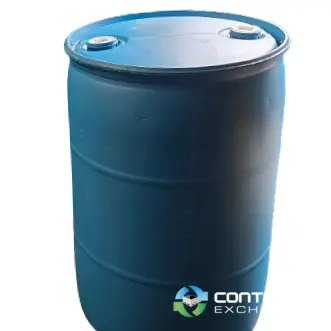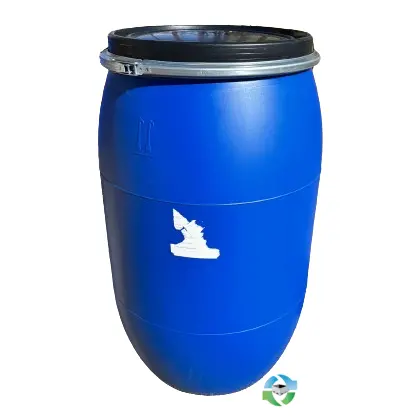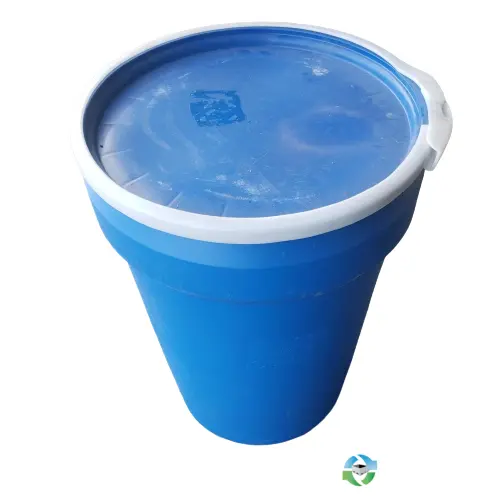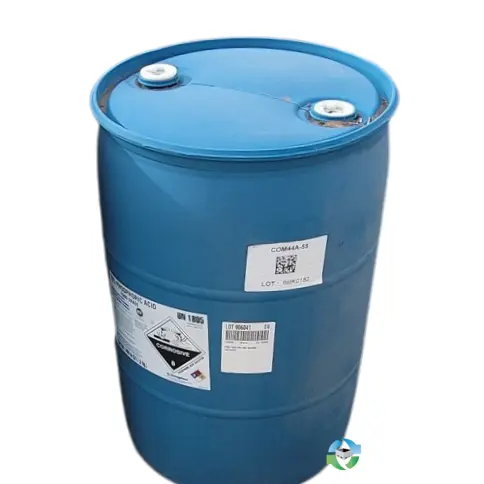Plastic or polyethylene drums are essential for chemical packaging and transportation. These containers are notable for their toughness, corrosion resistance, and variety. HDPE drums store and transport materials safely, efficiently, and cheaply.
Polyethylene HDPE drums, both food-grade and non-food-grade, are useful in chemical packaging as well as transport. In this article, we will cover all aspects and details about them. Further we will also mention advantages, safety, types, etc. So, let’s begin!
What Is HDPE Material or A Polyethylene Drum?
HDPE drums and barrels are durable and chemical-resistant. Drums carry chemicals, food, drugs, and other hazardous materials. These barrels resist impact, humidity, and chemical reactions to preserve their contents. HDPE is lighter than steel or fiber, lowering shipping costs and simplifying handling.
We at Container Exchanger offer tight-head and open-head polyethylene drums. Tight-head drums with non-removable tops and small bungs can store liquids. For solids or viscous liquids, open-head drums’ removable cover with a metal lever-lock or ring bolt makes filling, emptying, and cleaning easy.
They vary between 15 or 50 gallons for industrial use, but 55 gallon is most common. UV inhibiting agents, static-proof materials for flammables, and color-coding for recognizing materials are available for outdoor storage drums.
How Long Have HDPE Drums Been Around?
For decades, HDPE drums have stored and transported industrial goods. Since they were portable and strong, HDPE drums superseded steel drums in the 1950s. This shift was driven by safer, more efficient transport of harsh substances, food, and medications. Its chemical resistance and physical properties made HDPE a popular drum material.
Shipping and storing goods require mold, mildew, rotting, and insect resistance. HDPE drums don’t rust, preserving their contents. Polymer science and manufacturing have improved HDPE drum design and functionality over the years. These improvements enable drum customization to meet industry and regulatory standards, especially for hazardous material transport.
Advantages of Polyethylene Drums
Polyethylene drums’ chemical resistance is a major benefit. They prevent acid, caustic, and solvent corrosion, making them safe for hazardous material transport and storage. See why these plastic containers are good for chemical packaging:
- Chemical Friendly: Polyethylene mixes with industrial chemicals. HDPE drums transport chemicals, cleaners, paints, and oils well.
- Durability Factors: Polyethylene & plastic drum containers can withstand rough shipping rather than metal drums, which can dent or corrode. This makes them ideal for long-distance travel.
- Leak Prevention: HDPE drums seal well, preventing leaks, spills, and contamination. Chemicals that harm the environment require this.
Why Should You Use Polyethylene Drums for Shipping?
Chemicals that require careful handling ship well in polyethylene drums. Why choose them for your next shipment:
- Light in Weight & Affordable: HDPE drums are lighter than metal containers, lowering shipping costs, especially for large shipments. Their lighter weight makes them easier to load and unload.
- Stackability: Many models of these drums stack easily for efficient storage. This makes storage cheaper and saves space.
- Reusability: Polyethylene drums are durable and reusable. For cleaning and recycling, buy plastic drums. Because used plastic barrels are a pocket-friendly and green way for companies to reduce waste.
Non-Food Grade Plastic Barrels
Non-food-safe materials are stored and transported in polyethylene barrels. These drums are ideal for chemical, pharmaceutical, oil, and hazardous material storage. Food-grade and non-food-grade barrels are made from the same HDPE but are not regulated.
Chemically compatible and corrosion-resistant industries benefit from these barrels. Chemically stable HDPE can contain acids, bases, and solvents. Lubricants, detergents, and adhesives are stored and transported in these drums in construction and automotive.
These drums can also be customized for ventilation, UV protection, and extreme temperature resistance in various sizes and lids.
More Benefits of Our Plastic Drums for Sale
Reusable and recyclable polyethylene drums are a sustainable packaging option as environmental concerns grow. Reusing plastic barrels reduces plastic production in many industries. Most commercial containers are used for storage and shipping of food and beverage products.
With proper cleaning and maintenance, these ones can last for years, providing sustainable packaging for companies. Polyethylene drums support circular economy by being recycled. Reducing virgin plastic production conserves natural resources and reduces plastic waste.
Buy Polyethylene Barrels from Container Exchanger Today!
Select the right plastic drum containers for chemicals or other industrial materials. From Container Exchanger, a trusted supplier of new and used industrial packaging solutions, used plastic drums can save you a lot.
Used polyethylene drums save businesses money without sacrificing quality. Inspection and cleaning can make used plastic drums as safe as new. Container Exchange sells plastic drums and barrels for various uses. You can buy 55-gallon plastic drums and chemical-specific ones online.
How to Check for Quality of Used Plastic Barrels?
Used plastic barrels save money and meet packaging needs. Before handling chemicals or other sensitive materials, these containers must be clean and high-quality. So how:
- Inspect Barrels: After buying used barrels, check for cracks, leaks, and significant wear. Feel free to contact the seller about the barrels’ previous contents and cleanliness.
- Check Certifications: Make sure used food-grade barrels meet health and safety standards. Check chemical compatibility certifications for non-food-grade barrels.
Maintaining Polyethylene Containers
Polyethylene drum maintenance is simple if you just follow these 4 pointers:
- Safety Precautions: Polyethylene drums must be handled safely when transporting hazardous chemicals. Follow industry regulations to avoid accidents and environmental damage. Seal these high density polyethylene HDPE drum leaks and spills to protect health.
- Regular Inspections: Polyethylene drums are safe and functional with regular inspections. Inspect for cracks, dents, and corrosion. Drum damage could compromise its ability to hold hazardous or pressurized materials. Food grade drums should work properly to prevent contamination.
- Cleaning Procedures: Wash polyethylene drums before reuse. Drums should be cleaned based on what they contained during storage and transportation. To safely and completely remove residues, hazardous materials may require specialized cleaning agents and procedures.
Final Words
Chemical packaging and shipping with polyethylene drums is safe, durable, and affordable. Their corrosion and chemical resistance, lightweight design, and stackability make them ideal for efficient and safe industries. Understanding plastic drum benefits and best practices will help you maximize their versatility, whether you buy new or used.
Lastly, check out Container Exchanger’s range of drums, barrels, and industrial containers for sale to get huge discounts and benefits on bulk orders. Happy shipping! 😊
